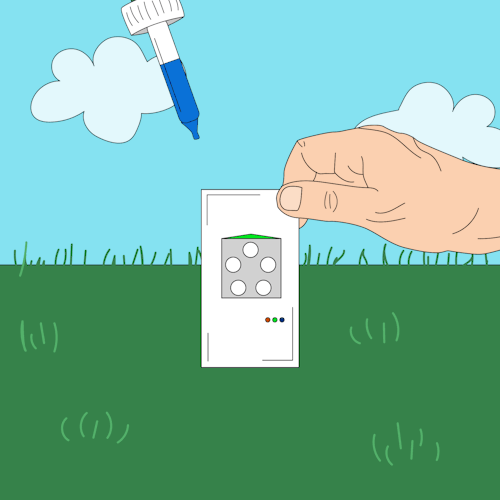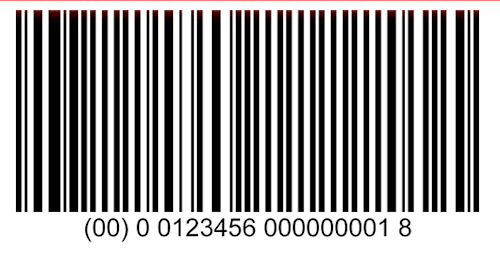#research science
Environmental Analysis Goes Mobile
Soil, paper, and a smartphone—could this be all farmers need in the future to perform environmental analyses? Quite possibly, thanks to the efforts of IBM researchers in Brazil. They’ve developed a research prototype, the AgroPad—a portable water and soil testing device powered by AI. When water or soil is placed on the microfluidics chip inside the card, it performs an on-the-spot chemical analysis of the sample, providing results in less than 10 seconds. A set of circles on the back of the card provide colorimetric test results; the color of each circle represents the amount of a particular chemical in the sample. With a dedicated mobile app, a farmer (or any user) can take a snapshot of the AgroPad and immediately receive a chemical test result. Real-time, on-site chemical analysis could be a game changer, as the traditional process of shipping samples to labs is often both time-consuming and cost-prohibitive. In the future, as the paper-based tests can be reliably performed by non-experts and instantly digitized, they could have the power to help revolutionize digital agriculture and environmental testing as we know it.
Explore the potential of mobile chemical analysis ->
Post link
“Houston, We Have Re-entry.”
We all love watching a spacecraft lift off, but equally important is its re-entry into the atmosphere at the end of a mission. On September 15, 1966, Gemini 11 became the first American crewed spacecraft to make a fully-automated onboard computer controlled re-entry. Guiding the spacecraft during this nail-biting endeavor? A 59-pound IBM computer designed to calculate the intricate maneuvers needed for safe re-entry into the Earth’s atmosphere. It was a landmark demonstration of trust in machinery, as the procedure went off without a hitch and set a new precedent for the world to cheer.
Learn more about IBM and the Gemini Program ->
Post link
Serving Up Smarter Ways to Use Data
It’s a data-powered world out there—especially at the US Open. For over 25 years, IBM has collaborated with the U.S. Tennis Association to leverage data in rewarding ways for fans, coaches and players alike. This year, we’re demonstrating how these rewards extend far beyond the court. Our onsite experience at the Open shows not only how IBM technologies are being used to change the way fans experience tennis, but also how this same tech is applied to solve real world problems. Did you know Watson Visual Recognition can help identify players’ gestures during matches, as well as defects on a factory floor. Another Watson API, Sound Analysis, can derive insights from the intensity of crowd noise, and also detect wear-and-tear in elevators and train tracks. From the world of tennis to the world at large, IBM understands that well-wielded data can help unlock better experiences for all.
Learn more about IBM and the US Open ->
Post link
Reaching Our Full Patent-ial
9,100: the number of patents earned by IBM inventors last year. It’s a new milestone marking IBM’s 26th consecutive year of U.S. patent leadership. In 2018, IBM led the industry in patent grants related to a number of technologies, including 2,000 for cloud computing, 1,600 for AI, and 1,400 for security. It’s a testament to the savvy and sagacity of our invention team—8,500 IBM inventors across 47 U.S. States and 48 countries—and we’d like to thank each and every one of them for their dedication to the behind-the-scenes exploration of tomorrow’s technology.
Learn more about the innovations at the heart of the patents->
How the Barcode Changed Retail as We Know It
On this date in 1973, IBM introduced the universal product code, or UPC. Along with the introduction of laser scanning technology, the UPC barcode quickly revolutionized the grocery and retail industries, making checkout faster and inventory tracking a lot easier. The barcode changed the information processing system for almost every industry around the world and remains one of the most pervasive inventory tracking tools in the world today. Though just a small group of black bars, the UPC changed the world in a very big way.
Learn more about the invention of the barcode scanner ->
Post link
Helping to Predict Algal Blooms with AI and IoT
When algae blooms turn toxic, they can inflict sweeping harm on wildlife and humans that enter their path. One type of these algae overgrowths in coastal regions have a name—red tides—and in Florida, they’re such a problem that the governor has declared a state of emergency. It’s crunch time for research, and IBM is helping lead the charge, finding answers 1,000 miles away in New York’s Lake George. The Jefferson Project, a partnership between IBM Research, Rensselaer Polytechnic Institute, and The FUND for Lake George, is turning the lake into a living laboratory. They’re using AI and IoT-connected sensors to power a new advance in environmental monitoring, modeling how bodies of water react to higher concentrations of humans, chemical runoff, and other disruptors. They’re collecting around nine terabytes of data per year, and the insights derived from this treasure trove of data may help unlock the power to literally stem red tides. The Jefferson Project is one of many IBM efforts to help preserve the environment for current and future generations.
Learn more about the Jefferson Project ->
Post link





